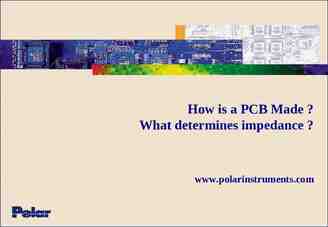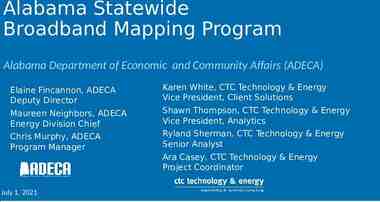Cloud Computing Presentation by Michael Calvo Paper by M. Armbrust, A.
18 Slides1.03 MB
Cloud Computing Presentation by Michael Calvo Paper by M. Armbrust, A. Fox, R.Griffith, A.D. Joseph, et. al.
Table of Contents Cloud Computing: A Primer Cloud Advantages Scalability Applications for Clouds Cloud Models Utility Computing Models Reasons for Moving to the Cloud Utility Computing for Profit
Cloud Computing: A Primer Cloud: Refers unknown location of processing and related data. Operations of the system are abstracted.
Table of Contents Cloud Computing: A Primer Cloud Advantages Scalability Applications for Clouds Cloud Models Utility Computing Models Utility Computing for Profit Reasons for Moving to the Cloud Factors that Affect Transfer Cost
Cloud Advantages Device and location independence Sharing of resources and costs across a large pool of users thus allowing for: Centralization of infrastructure in locations with lower costs (such as real estate, electricity, etc.) Increased load capacity and system efficiency. Reliability due to multiple redundant sites Maintenance of cloud computing applications is easier, because they do not need to be installed on each user's computer. They are easier to support and to improve, as the changes reach the clients instantly. Rapid and inexpensive reprovisioning results in scalability
Scalability
Table of Contents Cloud Computing: A Primer Cloud Advantages Scalability Applications for Clouds Cloud Models Utility Computing Models Utility Computing for Profit Reasons for Moving to the Cloud Factors that Affect Transfer Cost
Applications for Clouds Mobile interactive applications Parallel batch processing Highly available, rely on large data sets that are most conveniently hosted in large datacenters. Do 1000 work hours of a single computer in 1 hour with 1000 computers Extension of compute-intensive applications Possibility of running your entire OS off of the Cloud.
Table of Contents Cloud Computing: A Primer Cloud Advantages Scalability Applications for Clouds Cloud Models Utility Computing Models Utility Computing for Profit Reasons for Moving to the Cloud Factors that Affect Transfer Cost
Different Cloud Models There are two types of clouds: Public Clouds – System is made available to Users via pay-as-you-go. Resource sold is called Utility Computing. Private Clouds – Internal datacenters of a buisness not made available to the public. Various levels of abstraction.
Utility Computing Models Hardware virtual machines Able to control from the kernel upwards. Users are a 'thin' client. Downsides Difficult to provide automatic scalability Ex. Amazon EC2
Utility Computing Models Application Domain Specific Clouds Focuses on internet application structure Stateless computation vs. stateful storage Due to this enforced structure, it's easier for the system to automatically scale. Downsides Cloud needs to be designed to work for only that application. Ex. Google AppEngine
Utility Computing Models Middle Ground Users get to choose what language the language the system recognizes, but don't control the OS or runtime. Supports general-purpose computing. This means that users get some automatic network configuration and scaleability but requires at least some specifications by the developer. Ex. Microsoft Azure
Table of Contents Cloud Computing: A Primer Cloud Advantages Scalability Applications for Clouds Cloud Models Utility Computing Models Utility Computing for Profit Reasons for Moving to the Cloud Factors that Affect Transfer Cost
Utility Computing for Profit
Reasons For Moving To The Cloud Demand for a service varies over time Demand is unknown in advance Don't want to pay for cycles you're not using, but don't want to be unprepared for the peak hours. Don't want to be unprepared. Calculating Computations faster 1000 EC2 machines for 1 hour costs the same as using 1 machine for 1000 hours.
Factors That Affect Transfer Cost Users want to pay seperately per resource. What rates will be the for CPU power? Storage? Bandwidth? Companies want to pay as little as possible for constructing these datacenters. Is there a location with cheap resources? Are the maintenance costs manageable? Hardware operational costs are very low. Software maintenance is expensive.
References Armbrust, Michael, Armando Fox, Rean Griffith, Randy H. Katz, and Andrew Konwinski. "Above the Clouds: A Berkely View on Cloud Computing." EECS Journal at University of Berkerley. (2009): Print.























